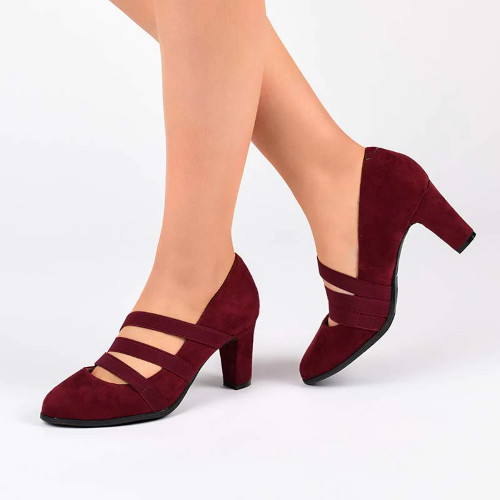Tips For Getting A Proper Shoe Fit

Tips For Getting A Proper Shoe Fit
Getting a proper shoe fit is essential for healthy feet since we walk miles over our lifetime. Feet that hurt are caused by wearing footwear that does not fit well and limits our ability to enjoy walking, hiking and other activities as we age.
Wearing shoes that are too tight, too loose, or without enough support may put pressure on our feet, ankles, lower leg, hip, and spine. This pressure can cause pain and injuries that may require surgery and / or limit our participation in work, sports, and hobbies.
A shoe that has a square or wide toe box and a low heel, lower than two inches high, is usually the best choice for women. There is a greater likelihood of being injured when wearing high heels. Higher heels with a platform under the toe box will decrease the stress on your foot. Sandals generally do not have much foot support. Sandals with one or more straps around your ankle offer more support than flip-flop styles. When buying walking or hiking footwear look for shoes with supportive arches.
10 Tips for getting shoes that fit:
1. The size of your feet changes as you grow older so always have your feet measured before buying shoes. The best time to measure your feet for the best shoe fitting is at the end of the day when your feet are largest.
2. Most of us have one foot that is larger than the other, so fit your shoe to your larger foot.
3. Don’t select shoes by the size marked inside the shoe but by how the shoe fits your foot.
4. Select a shoe that is shaped like your foot.
5. During the fitting process, make sure there is enough space ( 3/8″ to 1/2″ ) for your longest toe at the end of each shoe when you are standing up.
6. Make sure the ball of your foot fits comfortably into the widest part of the shoe.
7. Don’t buy shoes that feel too tight and expect them to stretch to fit.
8. Your heel should fit comfortably in the shoe with a minimum amount of slipping – the shoes should not ride up and down on your heel when you walk.
9. Walk in the shoes to make sure they fit and feel right. Then take them home and spend some time walking on carpet to make sure the fit is a good one.
10. The upper part of the shoes should be made of a soft, flexible material to match the shape of your foot. Shoes made of leather can reduce the possibility of skin irritations. Soles should provide solid footing and not be slippery. Thick soles cushion your feet when walking on hard surfaces. Low-heeled shoes are more comfortable, safer, and less damaging than high-heeled shoes.
